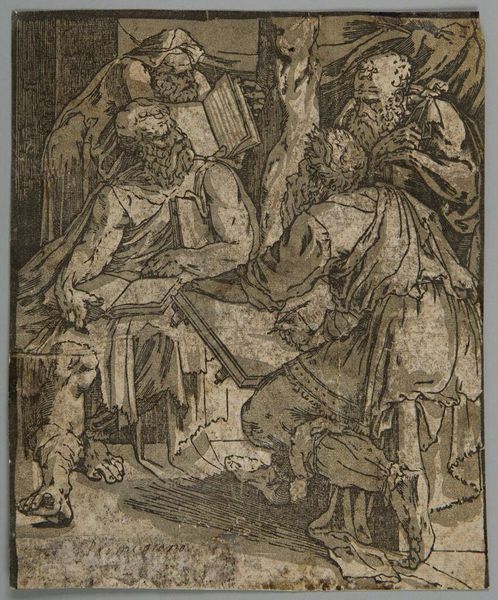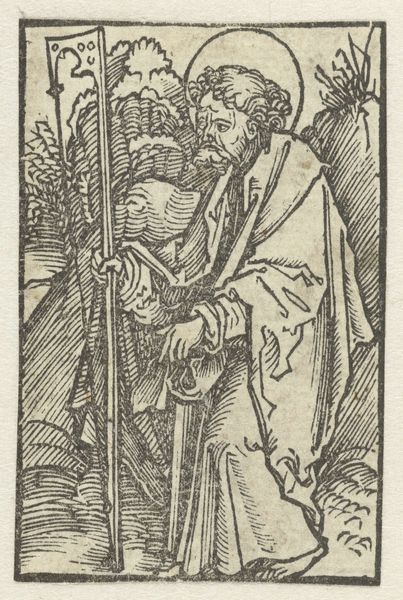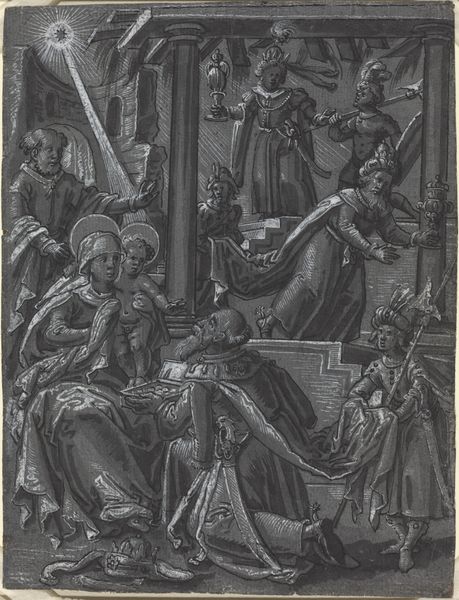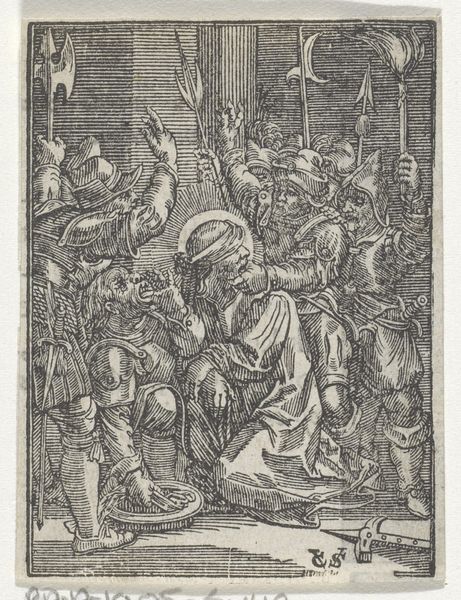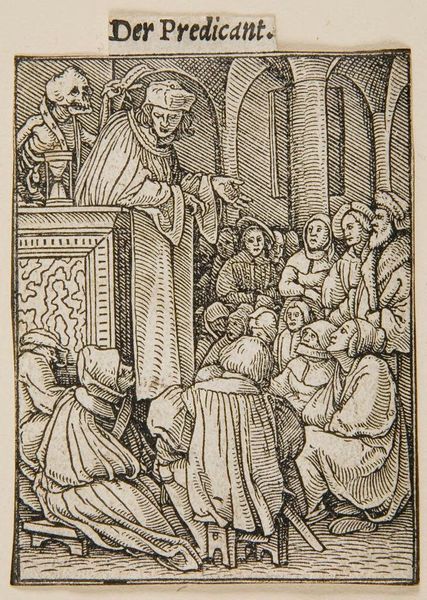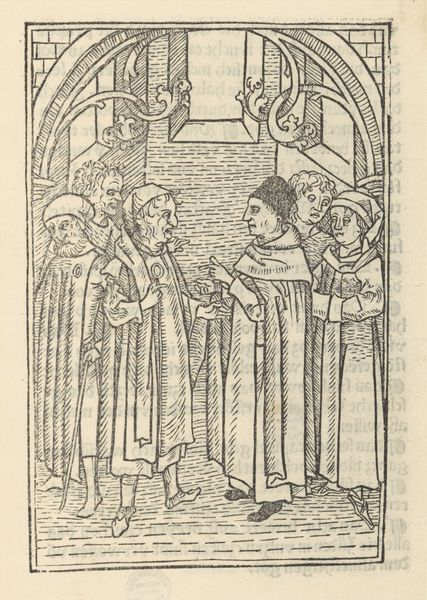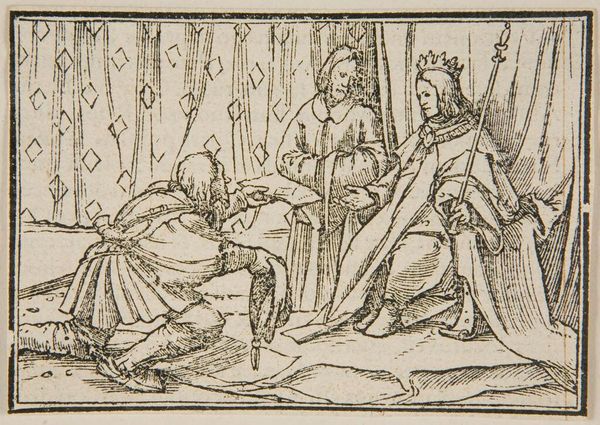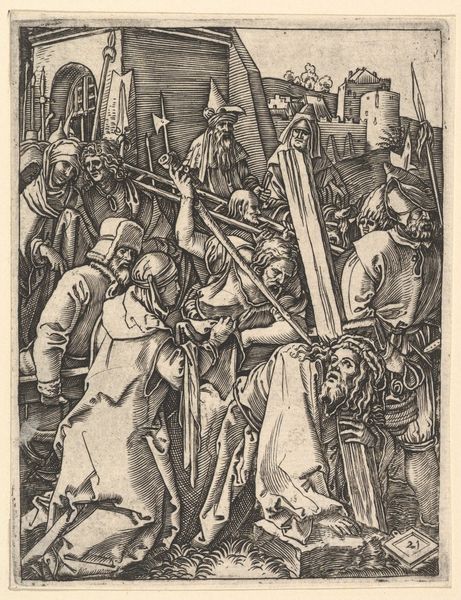
print, woodcut
#
medieval
#
narrative-art
# print
#
figuration
#
woodcut
#
history-painting
#
northern-renaissance
Dimensions: 6 7/8 x 5 1/4 in. (17.46 x 13.34 cm) (image)
Copyright: Public Domain
Curator: I’m immediately struck by the intense, almost chaotic, energy radiating from this composition. There’s a disturbing frenzy captured in such a small space. Editor: Indeed. We are looking at an anonymous woodcut from around 1470, titled *Christ Crowned with Thorns*. It’s currently held in the collection of the Minneapolis Institute of Art. This print exemplifies the Northern Renaissance interest in capturing human emotion during a period of religious narrative painting. Curator: The crowding of figures certainly amplifies the emotional weight. See how they converge upon Christ, each face etched with malice, taunting. Even the patterned background seems to press in, mirroring his psychological duress. The crown of thorns is almost an afterthought visually. The entire spectacle becomes symbolic of human cruelty itself, with a heavy reliance on dense patterns to create psychological texture. Editor: What’s striking to me is the potential for social commentary. While depicting a key scene from the Passion, the artist invites the viewer to consider not just the event itself, but the very public humiliation and spectacle of justice. It almost feels like early forms of media sensationalism, amplifying the brutal political theater for didactic means. Note how the work does not invite contemplation, it promotes fear and piety through sensational storytelling. Curator: An intriguing reading. I see also how certain elements such as the ropes binding Christ’s hands function as a visual symbol for unjust imprisonment, and how his robes offer up layers upon layers of patterning that create an overwhelming sense of constraint. One can almost feel the prick of the thorns through the meticulous linework. Editor: What this artwork presents is a powerful artifact, indicative of the complex relationship between religious institutions, public displays of power, and emerging print culture. It compels me to think how effective woodcuts such as this disseminated images, and what kind of public reception they created. It certainly speaks volumes about power relations within Renaissance society. Curator: Ultimately, this small print leaves a powerful echo, a somber contemplation on human suffering and visual narratives, long after you turn away from the image. Editor: A chilling image that stays with us. I’m still reeling at its power to ignite discussion after all this time.
Comments
No comments
Be the first to comment and join the conversation on the ultimate creative platform.
